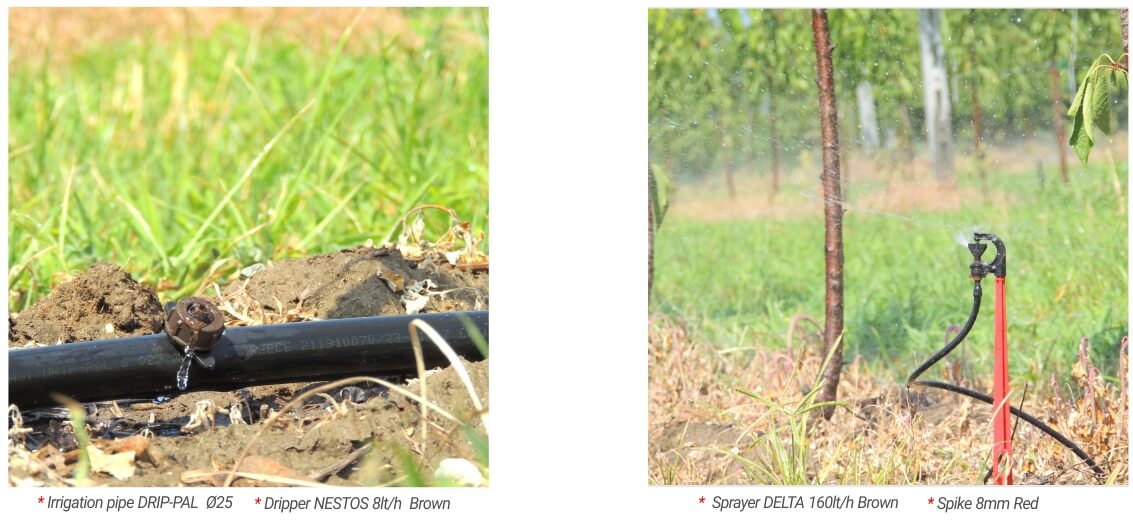HEAT AND PLANTS: How can we take care of our plants in high temperatures?
Having entered July, in the heart of summer, high temperatures, heat waves, hot winds and long hours of exposure to intense sunlight are a common phenomenon that can cause irreparable damage to our plants and flowers. The sun, a necessary component of photosynthesis, contributes to the ripening and timely harvesting of many fruits and vegetables, but can also cause them damage, with excessive levels of exposure as during the summer months.
There are several thermophilic plant species, such as cacti and succulents – representative of desert vegetation – that have the characteristics to withstand the stress of very high temperatures of up to 60⁰C, while for short -term exposure up to 70⁰C. Furthermore, plants have the suitable mechanisms that allow them to adapt to higher temperatures as the seasons change. Nevertheless, when very early heat waves occur, significant damages can be incurred to plants that are unprepared.
Some of the symptoms from high temperatures are:
• Plant withering – generally a picture of weakness, due to loss of moisture of the plant.
• Leaves turn yellow (usually the lower leaves first, which then turn brown).
• Burns on leaves and fruits of plants, which appear as white spots on them, especially due to midday watering.
• Fall of part of the leaves, flowers and their fruits (the plants water saving mechanism to retain moisture).
• Finally, it is worth noting the presence of many insects and diseases during the summer, which parasitize the already diseased plants.
In order to keep our plants healthy and full of life in the face of adverse conditions of heat, sunlight and very high summer temperatures, we will need to take certain actions, such as proper watering. This should ideally be done early in the morning (so that the plant has the required humidity to cope with the difficult hot hours) or late at dusk. Watering at noon should be avoided, as high humidity and high temperatures will create ideal conditions for the growth of many fungi. Moreover, if water drops fall on leaves or fruits, they can easily cause sunburn in those hours. It is preferred to water with a small amount of water at frequent intervals (preferably daily), as the conditions of excessive humidity can cause rot at the root of the plants, the fall of leaves and flowers as well as promote the development of diseases and fungi.

For proper watering of plants during the summer, whether it is a few pot-plants on the balcony or an entire garden or field, using an automatic watering system is the most practical way to have complete control over the frequency and amount of water provided. The advantages of an automatic irrigation system are multiple, and naming just a few:
1. Irrigation with the right amount of water, making significant savings of this valuable resource, and also economy.
2. Watering of plants at selected points, in order to avoid the development of fungal diseases when watering is done over them, and also limiting the growth of weeds around the plants.
3. Saving valuable time which can be spent on other cultivation work, and of course it is possible to provide consistent irrigation to the plants even when we are absent.
Palaplast has a wide range of products that can be used to install a reliable and efficient automatic watering system from its simplest form on a balcony with pot-plants to the most complex in a productive field: irrigation pipes LDPE, driplines, tap timers & battery or electrically operated controllers, garden fittings, indented & dripline fittings, filters e.t.c.
Further protection of plants and crops during the heat wave, can be achieved with: the shading of plants, avoiding of fertilization (especially with ammonia fertilizers or manure that causes significant stress on plants), proper pruning and care of plants (to improve ventilation), foliage spraying using ecological solutions (such as kaolin or zeolite solution), ground covering (with materials such as pebbles, pine bark, etc.), water – spraying the leaves of plants (for indoor plants), use of horticultural perlite etc.
In conclusion, we should remember that the sun is vitally important for everyone and everything, but must be taken to advantage with care.



